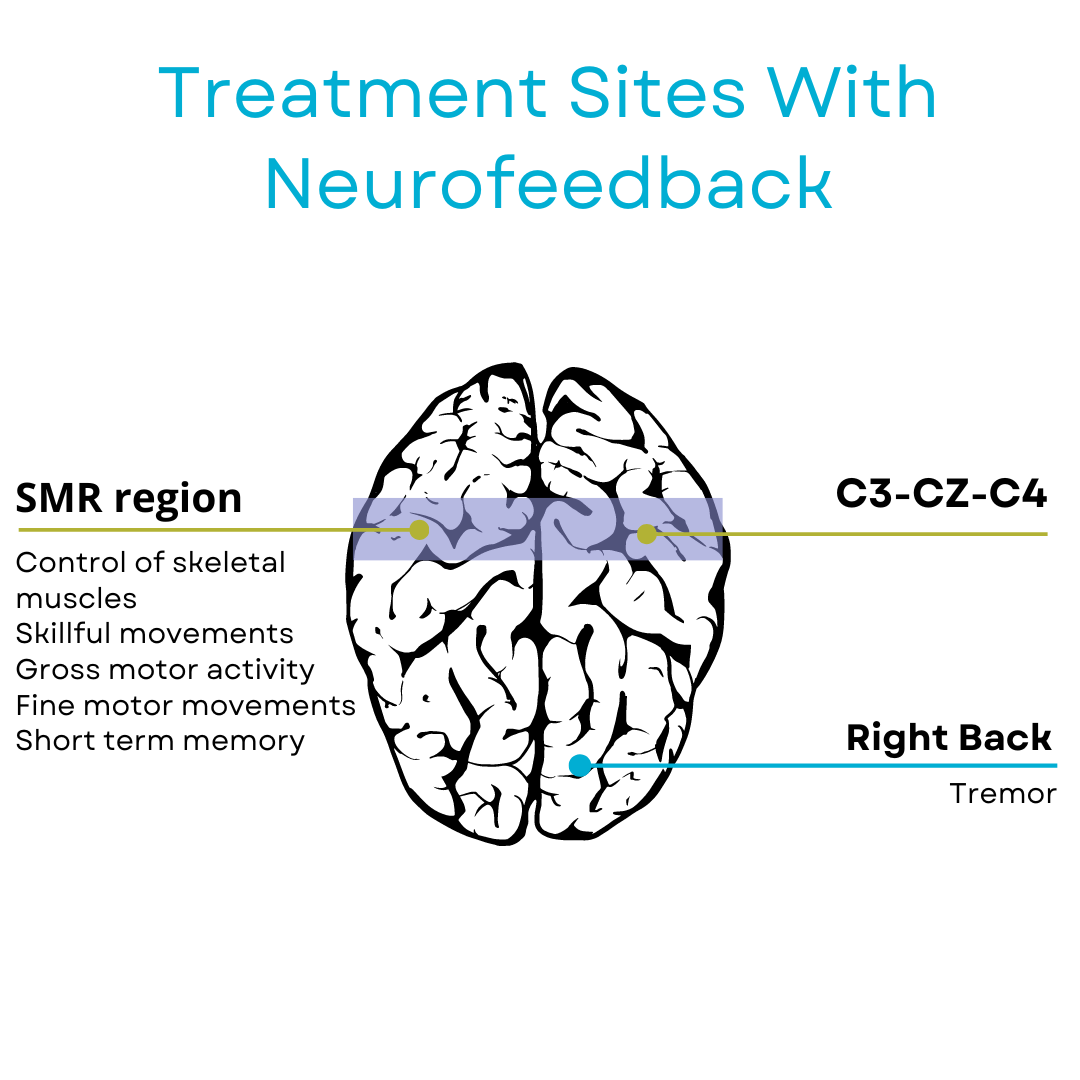Parkinson's
Parkinson’s disease is a neurodegenerative disorder characterized by motor impairments, tremors, and difficulties in movement. While traditional pharmacological interventions provide symptomatic relief, they may have limitations and side effects. Neurofeedback, a non-invasive therapeutic approach, has shown promise in addressing Parkinson’s symptoms and improving overall well-being. Unlike medications that often come with side effects, neurofeedback harnesses the brain’s natural ability to learn and adapt.
Neurofeedback works by monitoring brainwave activity, typically using electroencephalography (EEG), and providing real-time feedback to individuals. In the context of Parkinson’s disease, neurofeedback aims to regulate abnormal brainwave patterns associated with motor control and movement. By guiding individuals to self-regulate these brainwave activities, neurofeedback enhances neural pathways, potentially leading to improved motor function and reduced symptoms.

One significant advantage of neurofeedback over medication is its targeted and individualized approach. Medications often involve a one-size-fits-all strategy, whereas neurofeedback tailors the training to the specific needs and responses of each person. This personalized approach can be particularly beneficial in addressing the diverse and fluctuating symptoms experienced by individuals with Parkinson’s.
Combining neurofeedback with Parkinson’s movement therapies, such as physical and occupational therapies, can yield synergistic benefits. Neurofeedback enhances neural plasticity, creating a more receptive environment for the motor skills and exercises practiced in movement therapies. This combined approach can potentially optimize motor function, coordination, and balance, leading to a more comprehensive and sustainable improvement in the quality of life for individuals with Parkinson’s disease.
Studies
Azarpaikan A, Torbati HT, Sohrabi M. Neurofeedback and physical balance in Parkinson’s patients. Gait Posture. 2014;40(1):177-81. Doi: 10.1016/j.gaitpost.2014.03.179. Epub 2014 Mar 30. PMID: 24746035. This study aimed to investigate the impact of neurofeedback training (NFT) on balance issues associated with Parkinson’s disease. Sixteen participants were selected and randomly assigned to experimental and control groups. The research comprised eight sessions, with pre-tests and post-tests assessing static and dynamic balance using the Biodex “limit of stability” and the Berg scale. Following neurofeedback training, the experimental group exhibited a statistically significant improvement in both static and dynamic balance. The Biodex and Berg scores increased from 18.87 to 42.87 and 17.62 to 46.37, respectively. In contrast, the control group’s pretest scores were 18.25 and 17.75, increasing to 20.00 and 20.50, respectively. These findings suggest that NFT holds promise for enhancing static and dynamic balance in individuals with Parkinson’s disease.